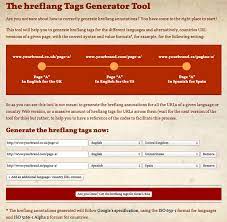Eps 2011: hreflang tag usage and limitations
— The too lazy to register an account podcast
In this 10-minute podcast titled "hreflang tag usage and limitations," the speaker discusses the importance and limitations of using hreflang tags. Hreflang tags are HTML tags used to specify the language and geographical targeting of a webpage. The speaker explains that hreflang tags are essential for websites with multiple language versions or variations for different regions. These tags help search engines understand which language version should be displayed in a particular country or language-specific search. By implementing hreflang tags correctly, website owners can improve their site's visibility in local search results. However, the speaker also highlights the limitations of hreflang tags. They emphasize that incorrect implementation or missing hreflang tags can result in unintended consequences, such as poor rankings or incorrect targeting. The speaker provides examples where websites mistakenly used incorrect hreflang tags, leading to indexation issues and negatively impacting their SEO efforts. To avoid these limitations, the speaker suggests some best practices for using hreflang tags. They recommend using the x-default tag for ambiguous language variations and ensuring that the tags are implemented consistently and correctly throughout the site. The speaker also advises regularly monitoring the performance of hreflang tags through search console reports to catch any issues and make necessary adjustments. In conclusion, hreflang tags play a crucial role in optimizing websites for different languages and regions. However, it is essential to use them correctly to avoid any negative consequences. By following best practices, website owners can ensure that their hreflang tags are implemented effectively and contribute to improved search visibility.
| Seed data: | Link 1 |
|---|---|
| Host image: | StyleGAN neural net |
| Content creation: | GPT-3.5, |
Host

Tom Shelton
Podcast Content
Welcome to today's podcast! In this episode, we will be discussing the usage and limitations of hreflang tags. These tags are essential for websites that wish to target specific international audiences and enhance their overall user experience. They play a crucial role in search engine optimization and help search engines understand the languages and regional variations of a website's content. However, despite their importance, hreflang tags come with certain limitations that we will explore in detail.
To begin with, let's discuss the proper usage of hreflang tags. These tags are primarily used to indicate the language and geographical targeting of a webpage. They provide search engines with clear signals about the intended audience, ensuring that the right version of a webpage appears in search results for a particular region or language. By implementing hreflang tags correctly, website owners can maximize their organic search traffic and ultimately increase conversions.
When it comes to implementing hreflang tags, there are several best practices to keep in mind. Firstly, each variation of a webpage should have a specific hreflang tag pointing to the other language or regional versions. This helps search engines understand the relationship between different pages and ensures accurate targeting. Additionally, it is crucial to use valid language or country codes for hreflang tags. These codes follow ISO standards and provide search engines with necessary information about the targeted audience.
Another important factor to consider when using hreflang tags is the implementation method. There are two main methods to implement hreflang tags: HTML link element and HTTP header. The HTML link element is the most commonly used method, as it allows for flexible placement in the page's head section. On the other hand, HTTP header implementation requires server-level modifications, making it more suitable for advanced implementations or when no access to the HTML code is available.
Now, let's move on to the limitations of hreflang tags. Despite their usefulness, these tags can be challenging to implement correctly, especially for larger websites with numerous language variations. Properly managing hreflang tags requires meticulous attention to detail and ongoing monitoring to ensure that they are not misinterpreted by search engines. Incorrect implementation can lead to ranking fluctuations and confusion for both search engines and users.
Another limitation of hreflang tags is that they only work within the same domain. This means that if a website has multiple domains for targeting different regions or languages, hreflang tags alone cannot establish a connection between them. In such cases, additional measures, such as using rel="canonical" or implementing cross-domain tracking, may be necessary to ensure proper targeting.
Furthermore, it is important to note that hreflang tags are just one piece of the puzzle when it comes to international SEO. While they help search engines understand the language and regional targeting of a webpage, other factors, such as localized content, relevant backlinks, and user-friendly design, also play a significant role in achieving international visibility and ranking.
In conclusion, hreflang tags are indispensable for websites targeting specific international audiences. Their correct implementation can greatly enhance a website's search engine performance and overall user experience. However, it is crucial to be aware of the limitations and challenges associated with hreflang tags. Meticulous attention to detail, ongoing monitoring, and considering other factors of international SEO are essential to maximize the benefits of hreflang tags and achieve successful international targeting. That brings us to the end of today's podcast. We hope you found this discussion helpful and informative. Thank you for tuning in!
